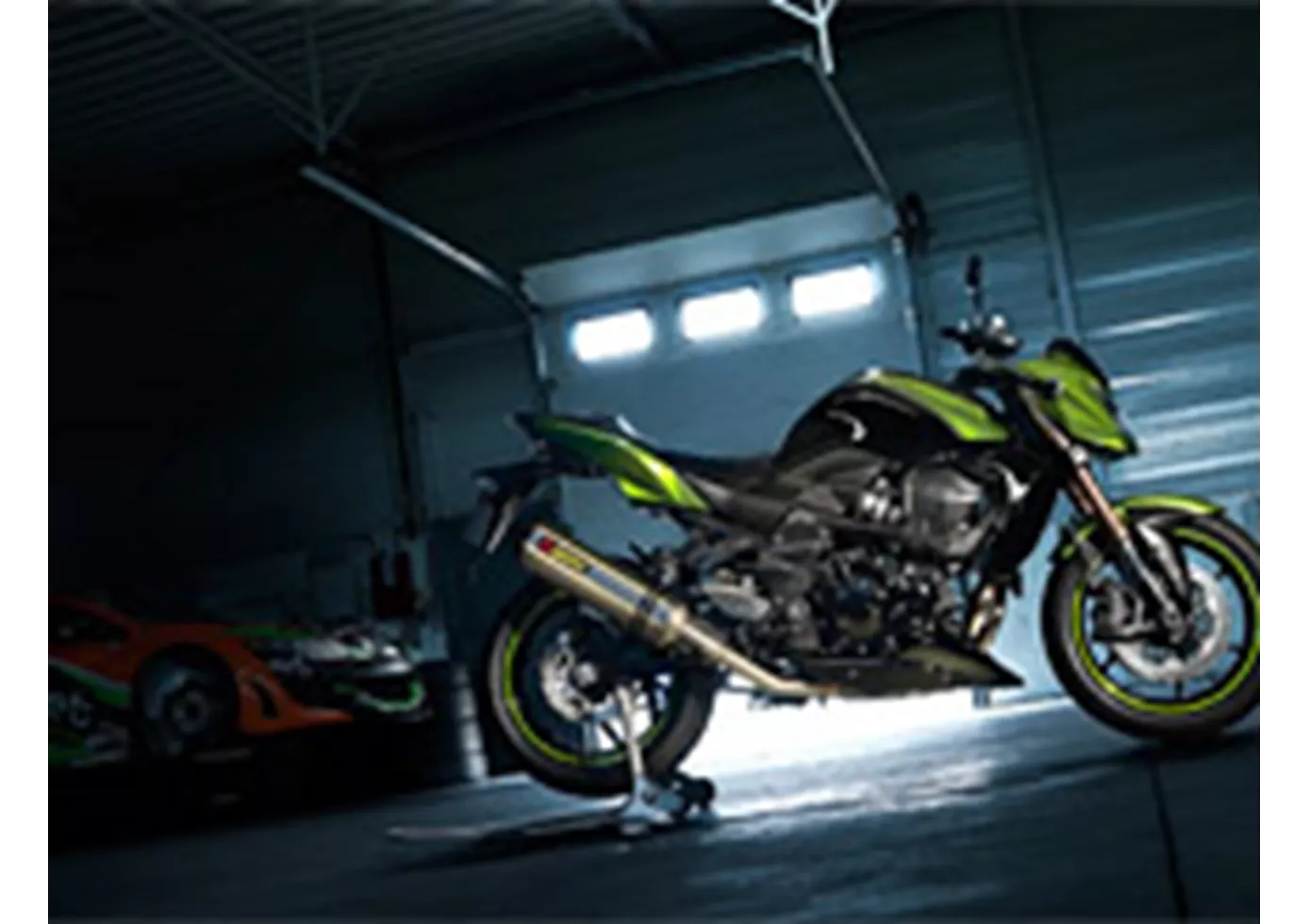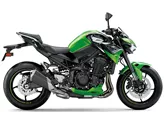Kawasaki Z 750R 2012 vs. Kawasaki Z1000 2010

Kawasaki Z 750R 2012

Kawasaki Z1000 2010
Overview - Kawasaki Z 750R 2012 vs Kawasaki Z1000 2010
The Kawasaki Z 750R 2012 and the Kawasaki Z1000 2010 are both naked bikes with similar engine types, in-line four-cylinder engines with liquid cooling. However, there are some notable differences between the two models.
In terms of engine power, the Z1000 2010 has a clear advantage with 138 horsepower compared to the Z 750R 2012's 106 horsepower. This means that the Z1000 2010 will provide a more exhilarating and powerful riding experience.
Both bikes have upside-down telescopic forks for the front suspension, but the Z1000 2010 offers more adjustment options with compression, preload, and rebound adjustments. This allows for a more customizable and comfortable ride, catering to the rider's preferences and road conditions. The Z 750R 2012 only offers rebound adjustment for the front suspension.

Kawasaki Z 750R 2012
For the rear suspension, both models have compression, preload, and rebound adjustments, providing a similar level of customization and comfort.
In terms of the chassis, the Z 750R 2012 has a steel frame with a twin tube design, while the Z1000 2010 has an aluminum frame with a double cradle design. The aluminum frame of the Z1000 2010 is lighter and offers better rigidity, contributing to more direct handling and improved overall performance.
Both bikes have double disk brakes with four pistons at the front, utilizing radial and petal technology. However, the Z1000 2010 is noted to have slightly suboptimal brake inputs, although still acceptable.
In terms of dimensions and weights, both models have a similar wheelbase of 1440 mm. The Z 750R 2012 has a higher seat height of 835 mm compared to the Z1000 2010's 815 mm. The Z 750R 2012 also has a higher kerb weight of 227 kg, while the Z1000 2010 is slightly lighter at 221 kg. Additionally, the Z 750R 2012 has a larger fuel tank capacity of 18.5 liters compared to the Z1000 2010's 15 liters.

Kawasaki Z1000 2010
In terms of strengths, the Z 750R 2012 is praised for its well-designed appearance, stable chassis, footrests that offer perfect support, and efficient frame cover. On the other hand, the Z1000 2010 is commended for providing satisfaction in the saddle, plenty of power, a pure pull, good chassis, comfort, sophisticated design, tightly tuned suspension elements, and more direct handling.
As for weaknesses, the Z 750R 2012 is noted to lack clean engine tuning with a power commander, which may affect its overall performance. The Z1000 2010 is mentioned to have slightly suboptimal brake inputs, although still considered acceptable.
In conclusion, while both the Kawasaki Z 750R 2012 and the Kawasaki Z1000 2010 are powerful naked bikes with similar engine types, the Z1000 2010 offers more power, a more advanced chassis, and a more customizable suspension. However, the Z 750R 2012 has its own strengths, such as a well-designed appearance and stable chassis. Ultimately, the choice between the two models will depend on the rider's preferences and priorities.
Technical Specifications Kawasaki Z 750R 2012 compared to Kawasaki Z1000 2010
Pros and Cons in comparison
Pros and Cons in comparison
Kawasaki Z 750R 2012

All in all, the tuning here has been really fine-tuned and precise. For your money, you get a really good naked bike racer with an optimal price/performance ratio that is easy to ride and achieves fast lap times. If you then dismantle the parts after a few years, you can sell the vehicle very easily on the second-hand market - the Z750 R is very popular there.
Kawasaki Z1000 2010

Some made a noble impression at first glance, but the Japanese managed to screw up the whole bike by fitting a single rancid part (exhaust, indicators, swingarm, fork,...). Kawasaki brings the Z 1000 in 2010 all new and all serious.
Price Comparison Avarage Market Price Kawasaki Z 750R vs Kawasaki Z1000
There are a few key differences between a Kawasaki Z 750R 2012 and a Kawasaki Z1000 2010. There are the same number of bikes of both models available on the 1000PS.de marketplace, specifically 5. It takes less time to sell a Kawasaki Z1000 with 65 days compared to 69 days for the Kawasaki Z 750R. Since model year 2011 1000PS.de editors have written 7 reviews for the Kawasaki Z 750R and 41 reviews for the Kawasaki Z1000 since model year 2005. The first review for the Kawasaki Z 750R was published on 9/14/2010 and now has more than 17,800 views. This compares to more than 5,800 views for the first review on Kawasaki Z1000 published on 9/2/2002.


























